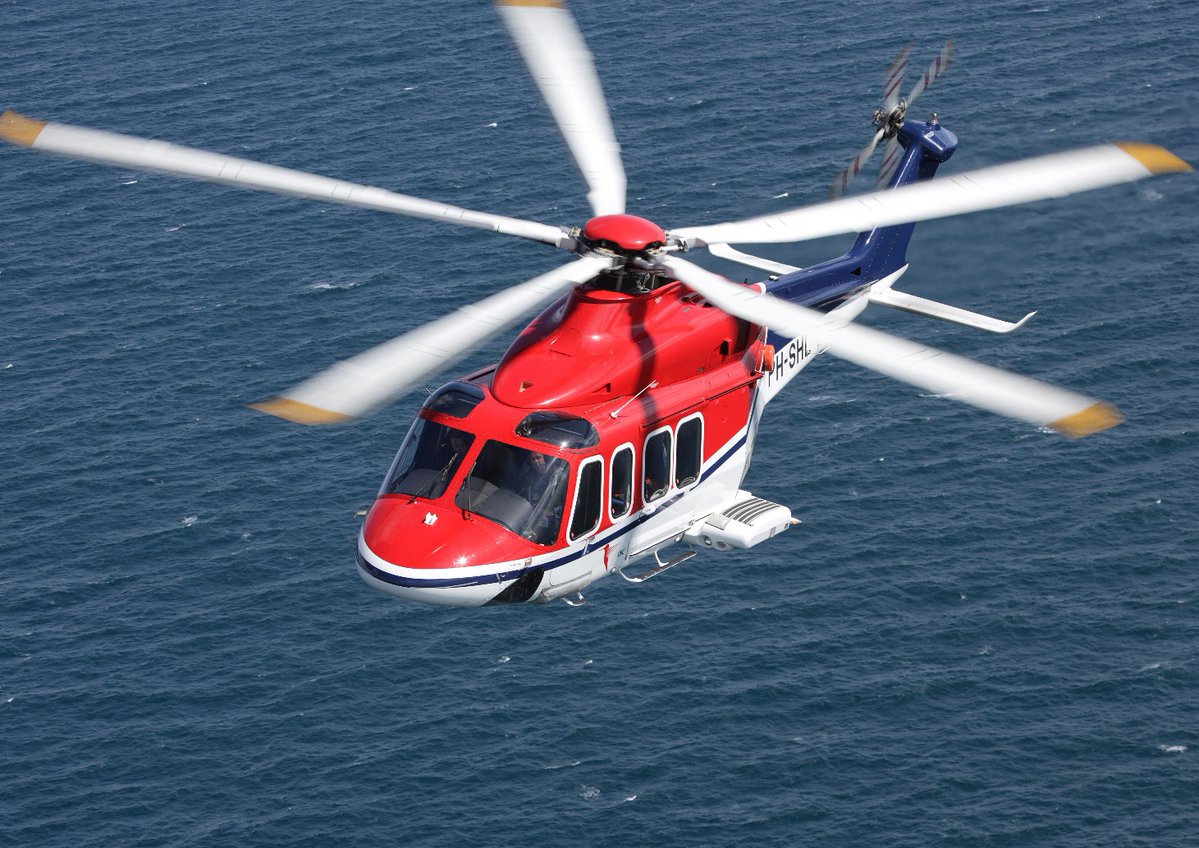Helijet receives heaviest aviation fines from Transport
Canada in BC
Richmond-based Helijet has received the heaviest fines
from Transport Canada so far this year for aviation violations in B.C., a review
of federal enforcement files by Postmedia News reveals.
Helijet was fined
a total of $26,250 on six counts over four separate days for failure to operate
an aircraft "in accordance with the operating limitations set out in the
aircraft flight manual."
The federal department had raised concerns about
the model of aircraft used by Helijet doing night flights onto so-called H1
category hospital helipads - those in dense urban areas - and the need for more
windows so that if one engine fails, pilots would have an unobstructed view for
an emergency landing.
Rick Hill, Helijet's vice-president of commercial
and business programs, said in response to the fines that the issue stemmed from
a Transport Canada inspection in March 2016 that resulted in Helijet voluntarily
suspending its Sikorsky 76C+ air-medical helicopters from landing at up to seven
hospital helipads in or near urban areas.
"A Transport Canada routine
inspection determined that Helijet's S76 Sikorsky helicopters used for
air-medical operations were not technically compliant with Transport Canada's
criteria for landing at H1 class heliports," Hill said.
The issue related
to an "impasse over documentation compliance concerning interpretation of the
Sikorsky S-76C+ flight manual," he said. While the issue was under review,
Helijet curtailed certain air-ambulance flights, and found alternative "safe and
effective means to transport patients in need of urgent medical care," he
said.
Eventually, a new technical document referred to as a Supplemental
Type Certificate was approved by Transport Canada and added to the S76C+
helicopter flight manual, which permitted resumption of landings at all
previously restricted ground and elevated H1 designated hospital heliports in
December 2016, Hill said.
Earlier this month, a federal Transportation
Safety Board report determined that flying under night visual flight rules (VFR)
without adequate visual reference to the ground, along with a lack of crew
coordination and ineffective standard operating procedures, led to a Helijet
Sikorsky S76 helicopter nearly colliding with terrain in Tofino in November
2015. Following the incident, Helijet increased employee training and developed
a risk management plan for night VFR operations. The company will provide
night-vision goggles to flight crews, the report added. The Tofino/Long Beach
Airport installed infrastructure and was night-certified in January
2017.
Other aviation companies fined by Transport Canada in B.C. this
year through October include:
* Helipsair Inc., a Quebec-based flight
training and commercial helicopter company, fined $3,750 for a helicopter
takeoff/approach/landing within a built-up area of a city or town.
*
Canadian Institute of Aviation Technology of Kelowna, $3,750, for failing to
record, at the required time, the required particulars in the aircraft journey
log.
* A numbered company, 1590877 Alberta Inc., a total of $15,000 for
three counts: operating an aircraft not properly registered, permitting an
aircraft to takeoff when it did not meet airworthiness directives requirements,
and permitting an aircraft to takeoff when it had not been properly
maintained.
* Northern Thunderbird Air Inc., based in Prince George, a
total of $15,000, for three counts of permitting an aircraft to takeoff where
the required equipment failed to meet airworthiness standards.
* Heiltsuk
Economic Development Corporation of Bella Bella, a total of $8,750, for two
counts, failing to establish and maintain a Safety Management System and failing
to submit an airport wildlife plan.
A separate review by Postmedia News
of Transport Canada files on reportable aviation incidents for 2017 showed
several involving Helijet Sikorsky helicopters, largely typical of the range of
events that aircraft encounter every year.
* Nov. 22: During a flight
from Vancouver harbour to Victoria International Airport, the crew declared an
emergency due to concerns with the tail rotor. After a safe landing, an
inspection revealed a malfunction with the autopilot computer.
* Oct.
10: During a flight from Vancouver harbour to Victoria harbour, the crew
declared an emergency after observing a number-one engine fire-warning light.
The crew activated the fire extinguisher and the warning light went out. A
subsequent inspection revealed a false warning caused by moisture on the fire
detector amplifier cannon plug.
* Sept. 6: The GPS stopped working during
a flight from Masset to Sandspit in poor weather. Unable to ascertain the exact
geographic position, the pilot climbed to obtain a visual reference with the
terrain. A Mayday was declared and radar vectors provided and the pilot flew
towards Sandspit, regaining a visual reference near Queen Charlotte City before
landing at Sandspit. "The operator reported that the GPS antenna was not
connected properly."
* July 2: On a local flight from Sandspit, the crew
"reported a float plane 100 feet overhead," believed to be an Inland Air
Charters de Havilland DHC-2 Beaver.
* April 28: The crew descended and
"altered heading toward the south in order to avoid a collision" with a Canadian
Forces Lockhead C-130 near Bowen Island flying at the same altitude.
*
Feb. 6: Shortly after takeoff from Vancouver harbour, the helicopter struck a
bird on one of the main rotor tip caps and the crew returned for landing.
* Jan. 9: A bird struck the main rotor during a medevac flight from
Vancouver harbour to Sechelt. An emergency was declared and the aircraft landed
safely at Vancouver International Airport with firefighting crews standing by.







 Oman
Oman 


